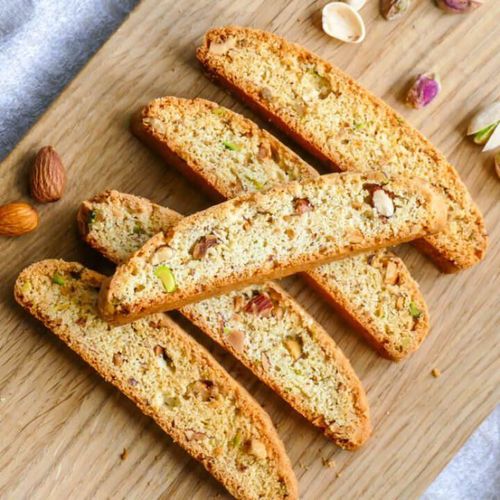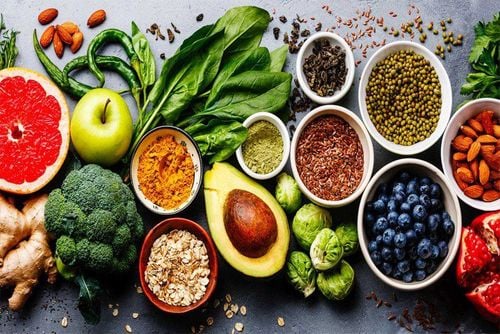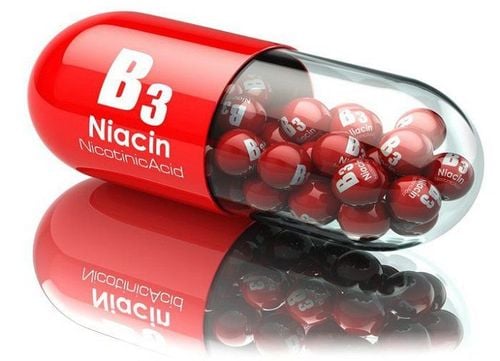This is an automatically translated article.
Food diversity is key to good nutrition, and children are no exception. Nuts are especially nutritious foods for children, as they are rich in essential nutrients that children need to help them grow and develop. A handful of valuable nuts are added to your child's diet. So which nuts should be given to children and what are the health benefits to children of these nuts?1. Nuts and Children's Health
Nuts in general, also known as nuts, are a natural source of nutrients such as vitamins, minerals, antioxidants, healthy fats, protein and fiber. growth and development both physically and intellectually. Examples of nuts include: almonds, Brazil nuts, cashews, chestnuts, hazelnuts, macadamias, pecans, pine nuts, pistachios, and walnuts.
Technically, peanuts are a type of bean, but they are often considered a nut because the nutritional composition of peanuts is similar to that of other nuts.
Normally, about 30g of nuts corresponds to a small handful or can be specifically converted to about: 30 pistachios; 20 almonds or hazelnuts; 15 cashews, pecans or macadamias; 9-10 Brazil nuts or walnuts; 4 chestnuts contain the following concentrations of specific nutrients:
36% of a child's daily vitamin E requirement 13% of a child's daily fiber requirement 4g protein B vitamins, calcium, iron, zinc, potassium and magnesium Regularly eating these nuts in conjunction with a healthy diet can help lower cholesterol, regulate blood pressure, reduce the risk of diabetes and cardiovascular disease, and maintain regular bowel movements. regularity and can even promote the health of the joint system.
2. Nuts in Children's Diet
Nuts can be eaten on their own as a quick and healthy snack, or used to add crunch and variety in recipes. Raw or dry roasted and unsalted nuts are the healthiest choice for meals, especially for children. Avoid nuts with added salt or sugar as much as possible.Nuts should be included in the diet from six months of age just like other foods. Children under the age of five should be aware of nuts as they can pose a choking hazard. These whole grains should be ground into a powder for cooking or added to a child's diet.
Here are a few suggestions moms can consider if they want to add nuts to their child's diet to help them enjoy really healthy meals:
Prepare a portion include a mix of nuts for kids to bring and eat at school Add almonds or cashews to stir-fries Add toasted chestnuts or pine nuts to salads Sprinkle with roasted, chopped or pistachios to assorted soup Chop up macadamia nuts for a crust on grilled fish Mash pecans and add to low-fat yogurt or a cup of juice Add walnuts to homemade banana bread Add some whole nut spread on toast, or as a sandwich filling, or in celery sticks. Regular or dry-roasted nuts are rated “GREEN” according to U.S. Department of Health and Safety Administration guidelines in school canteens. That means they are nutritious foods and should be on the canteen menu every day if allowed by the school.

Các loại hạt nên được đưa vào thực đơn của bé vì mang lại rất nhiều lợi ích sức khỏe
3. Reasons to include nuts in your child's diet
In addition to the effects they bring to adults, nuts in general also have great health benefits for children. Here are the reasons why we should add nuts to our child's diet:Nuts are a good source of vitamins B, E, niacin, folate, protein and manganese and contain many important minerals such as copper, manganese, potassium, calcium, iron, magnesium, zinc and selenium... great support for both physical and intellectual development of children. Nuts have been shown to be good for the cardiovascular system because they are a good source of monounsaturated fatty acids. Some nuts such as walnuts, almonds, etc. also contain large amounts of omega-3 fats. A type of fat that is considered very good for brain development in children, nuts are also involved in helping to create a healthy immune system for children. Nuts make the perfect snack. A handful of nuts provide children with abundant sources of energy. Besides, nuts are also known as a good source of good fats, which can be added to a child's daily diet. And the best part, nuts hardly require mothers to have great skills or spend a lot of time to prepare, nor find the dishes that are really right for them. Parents can buy a healthy nut mix or prepare it at home and at the store. Most nut mixes are high in added sugar, so don't forget to check food labels for added sugars. Nuts can also be eaten in a variety of forms such as roasted or boiled and many peanut products such as peanut butter, peanut oil, peanut/almond meal, dry roasted peanuts (snacks) always available. Walnuts, almonds, pistachios can be added to everyday snacks such as cereals or healthy desserts.

Bánh biscotti làm từ các loại hạt
4. Nuts and Allergic Reactions in Children
Peanuts and tree nuts can cause allergic reactions in some children. If your child's school does not include nuts as part of the food sold in the canteen and parents still want to add nuts to their child, the following nut products should be kept in mind: will not be included in the child's home take-out box:
Almonds / almond butter Brazil nuts Cashews / ground cashew nuts Chestnuts / hazelnut flour Hazelnuts / hazelnut flour Macadamias Mix of ingredients nuts Peanuts, peanut butter/powder, peanut powder, peanut oil Pecans Pine nuts Pistachios Walnuts Marzipan (contains almonds) Nutella orchid (hazelnuts) Praline, Baci (hazelnuts) ) Arachis (peanuts) Rhen flakes (peanuts) Satay sauce (peanuts) Also be aware of the risk of poisoning or allergies from certain foods that often contain nuts including:
Products Foods that provide plant-based or hydrolyzed proteins Flour-free doughnuts and cakes (usually containing powdered almonds) Flavored cheeses (fruits and nuts, walnuts) Peanut and satay sauce (peanuts)Chocolate nut (can be peanut or other nut) Packaged macaroons, confectionery or cake (usually almonds) Praline, a product made from fine nuts (usually hazelnuts) ) added to desserts and chocolates Nut crackers such as Amaretti, macarons, Florentines (almonds) Crushed nuts used to sprinkle on desserts e.g. Cakes, fruitcakes, ice cream Breakfast cereals ... Mixed crumbs Christmas cake and pudding Nougat and fudge Basil sauce Salad Packaged fruit cake (marzipan) Waldorf salad (walnuts) Asian meal Worcestershire sauce Packaged foods in ingredients containing nuts must be clearly stated on the label. In addition, manufacturers need to assure consumers of the potential for allergies, especially for children, of their products.
Nuts can be considered as natural treasures containing essential nutrients such as vitamins, minerals, antioxidants, healthy fats, protein and fiber, which help children grow, develop and enhance the ability to learn and explore. In addition to the great nutritional value, nuts are also one of the foods that are easy to prepare, suitable for many dishes as well as easily included in children's menus.
In addition to providing nutrition from nuts, parents should supplement children with supporting products containing lysine, essential micro-minerals and vitamins such as zinc, chromium, selenium, and B vitamins to help fully meet their needs. nutritional needs in children. At the same time, these essential vitamins also support digestion, enhance nutrient absorption, help improve anorexia, help children eat well, and develop comprehensively.
Please regularly visit Vinmec.com website and update useful information to take care of your baby and family.
Reference source: nutritionaustralia.org













